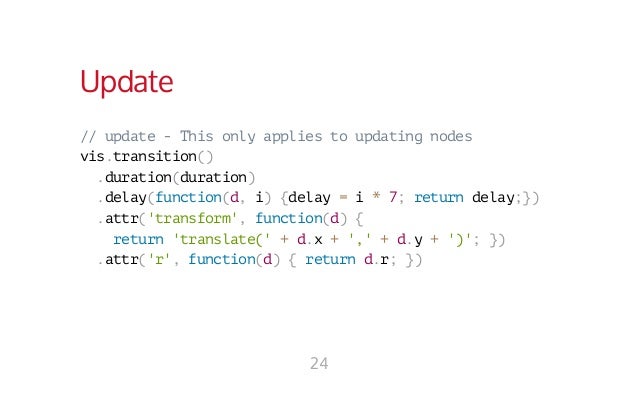

#VISUAL JSON GRAPH D3 HOW TO#
How to increase our row limit for the visual.How our dataViewMappings configuration handles each dataRole and adds it to the dataView.How our dataRoles configuration impacts the fields displayed by our visual.We’ve covered a lot of ground today and (assuming everything’s working), we should have a better understanding of the following for this particular scenario: This means our visual is processing the dataView as intended and can see the data how we want it. If we refresh the visual and inspect our browser’s console, we’ll get something like the below:Ĭonsole output from tests, and partial object array of mapped data
#VISUAL JSON GRAPH D3 CODE#
Use this rather than the link above, or you can click on the Raw button in the page to get the URL for yourself - thanks to Mike Allen for pointing this out :)Īs such, we’ll introduce code to validate the data types as part of our view model mapping later on. Update: this is the direct link to the raw CSV data, if you wish to load directly using Power Query. I have added this dataset into a Power BI report and dataset to allow us to do a side-by-side comparison of the original and Power BI version. This reference chart also uses this corresponding dataset. We’ll port this one into our custom visual. I’ve searched and found this great example of a simple d3 line chart. Please bear in mind that if you’re changing the version number from your currently installed one then you’ll also need to run pbiviz -install-cert to generate a new certificate for debugging purposes. We’re going to be working with the latest version of the SDK - at the time of writing this is 3.1.2, which can be forced by running this from the command prompt: Migrating the plotting logic into the custom visual framework.Īs per this recent post on the table data view mapping, we’re assuming that you have at least set up a development environment.Covers mapping the dataView into a shape that fits our existing reference chart.While the exercise is straightforward, we’re covering a lot of theory about the Custom Visual SDK’s dataView and other areas before we even begin. Once you have this figured out, it’s quite good fun to figure out more optimal ways to learn how to optimise this, as the data view mapping to replicate the code you’re referring to might actually be more complex than it needs to be… but that’s not our objective here. The truth is, it’s not that tricky to get started once you understand how you need to have your data roles, data view mappings and view model set up in order to fit the same format as the example you’re referring to. It’s pretty easy to just search the web for “d3 chart” and get a lot of examples that will work pretty nicely in a web page, but it can be tricky to understand how you can take such an example and make it work inside a Power BI custom visual.

There are a number of ways to plot visuals in TypeScript, particularly as the latest version of the SDK supports ES6 modules and I’m hoping to tackle some of these at a later date.īecause of the recent SDK changes, there’s a drought of examples for this new version, and I’m hoping to enable people to continue learning by posting about it whenever I can.īecause it’s so widely used for visualisation on the web, today we’ll focus on d3.js. One of the more common scenarios for people wanting to learn the custom visuals SDK is how to build chart types other than a bar chart (which is pretty well covered by the Sample Bar Chart Repo by MS).


 0 kommentar(er)
0 kommentar(er)
